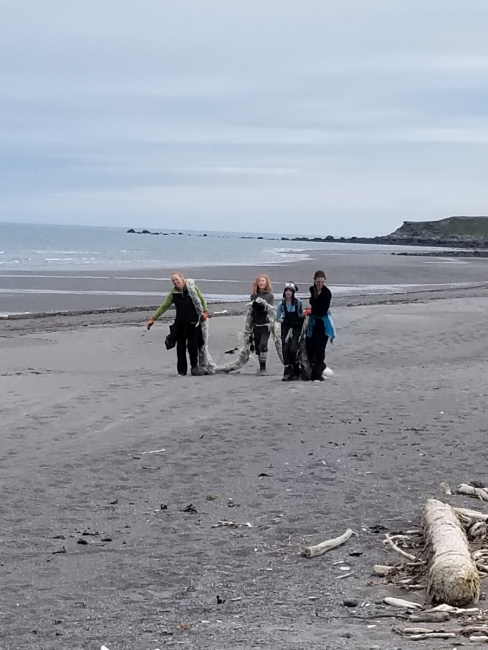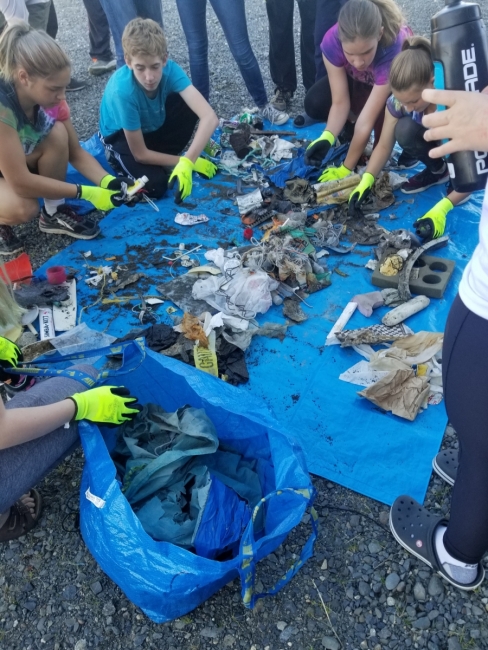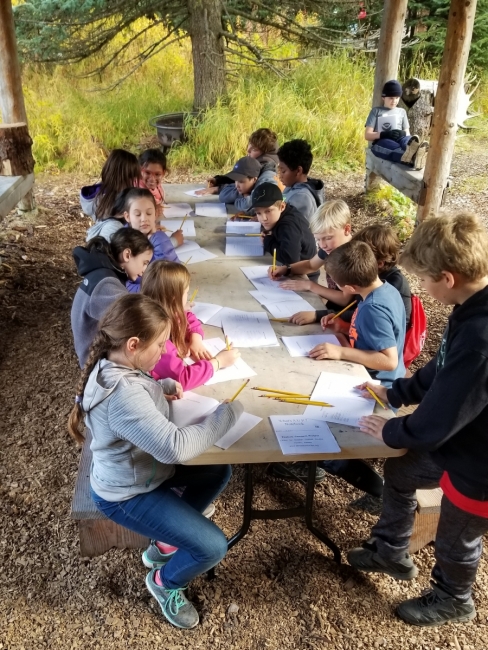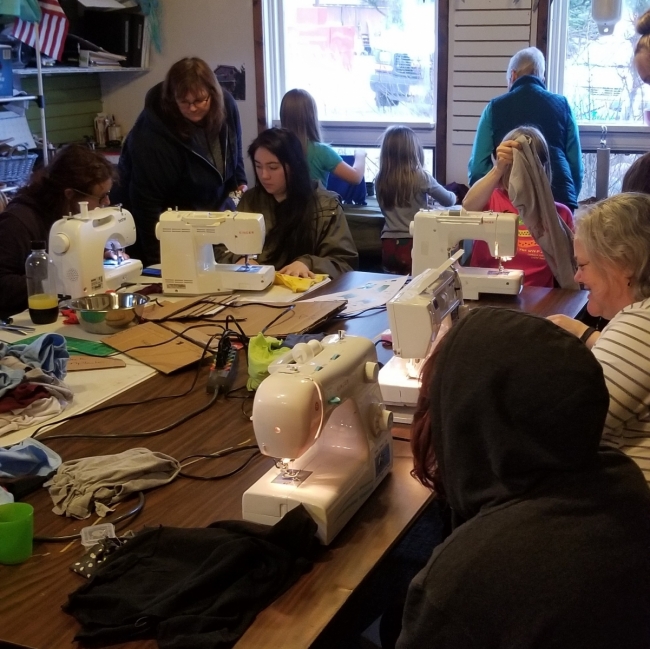By Elizabeth Trowbridge and Henry Reiske, Center for Alaskan Coastal Studies
Bottles, bags, plastic foam trays: single-use plastic has become an everyday part of peoples’ lives, and a common sight on beaches around Alaska. Cleaning debris off of beaches can only get to part of the mess, and only serve as part of the solution, especially in Alaska, where there are over 44,000 miles of often dangerous and difficult to access coastline. To address the issue further we have to slow the stream of plastic into a state where plastic is easy to come by, but difficult to deal with.
Supported by a Prevention Grant from the NOAA Marine Debris Program, the Center for Alaskan Coastal Studies (CACS), based in Homer, Alaska, is working with students and community members in Southcentral Alaska to raise awareness and reduce plastic waste. The program is called What’s S.U.P. (Single Use Plastic)?: Youth and Community Creating Change. Through the program, students are introduced to the issue of plastic waste and given the task of returning to their school to investigate the ways their school produces plastic waste, carrying out a project to reduce that waste, and educating the rest of the school about the issue.
The program starts with each class cleaning a section of a local beach, and then being immersed in an intensive overnight camp. Back at their school, the class performs a waste audit, weighing and counting the waste that is produced, and breaking it down into categories such as sporks, trays, baggies, wrappers, etc. From there the class identifies the top waste items and plans on how they will eliminate or minimize that plastic in their school.
The campaigns that have been carried out by students are diverse, impactful, and far reaching. In many schools in the Kenai Peninsula Borough School District lunch is served on plastic foam trays with plastic utensils, but that number is dropping. Several schools in the program have been able to eliminate the trays and sporks using creativity, persistence, and strong voices from active students. Others have focused on personal choices to decrease the number of pieces of single-use plastic brought from home. Still others have looked out into their communities and developed ways to help everyone reduce their waste.
As they carry out these projects, students are supported by CACS staff and continue to learn about plastic and marine debris issues. In turn, the students teach other classes at their school about what they have learned. During the summer, the final treat for teachers and selected students from each class will be a remote, multi-day clean up on the iconic and uninhabited Augustine Island, located out in the middle of Cook Inlet. They will take what they have learned back to their communities and inspire others to embrace changing habits to reduce single-use plastics. Projects started by the students continue long after the class has moved onto a new grade, or school. Through the efforts of dedicated teachers and students, thousands of pounds and hundreds of thousands of pieces of plastic have been eliminated, and will never enter our beautiful state or the ocean!





We are doing the same here in Pilot Point for Ugashik Bay - in Bristol Bay. I would be interested in any lesson plans or activity ideas that you may have after we have sorted and identified the debris.